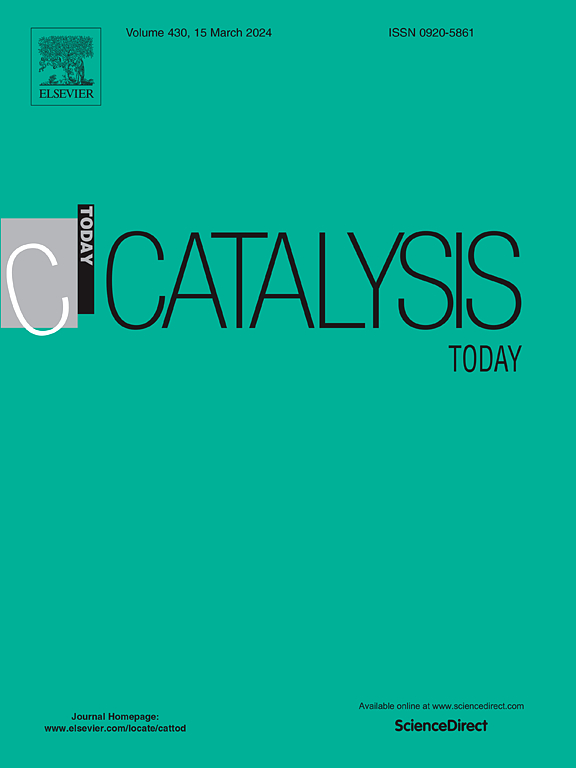Electrified and dynamically operated C1 chemistry: An emerging platform for power-to-X
IF 5.2
2区 化学
Q1 CHEMISTRY, APPLIED
引用次数: 0
Abstract
Catalytic conversion of one-carbon (C1) molecules, such as CH4, CO2, and CO, into fuels and value-added chemicals is a vitally important process in the chemical industry. The C1 catalytic reactions, including methane steam reforming and CO/CO2 hydrogenation for methanol synthesis or liquid fuel/chemicals production based on the Fischer-Tropsch technology, are foundational to the conventional chemical/energy industry. Additionally, these C1-related catalytic reactions have also been identified as important platforms for the power-to-X (PtX) processes. By utilizing CO2, biogas, or waste CH4 as the carbon sources, C1 catalytic reactions facilitate the creation of synthetic fuels and valuable chemicals, effectively recycling carbon and reducing reliance on fossil resources. However, conventional C1 catalytic reactions are typically operated at a very large scale and under a steady state for centralized production. For the PtX application, electrified and/or dynamically operated C1 catalytic processes for distributed synthesis must be developed in order to use intermittent renewable electricity to drive the reactions. This perspective summarizes recent advances and discusses the opportunities and challenges of the conversion of C1 molecules through electrified and dynamically operated catalysis.
电气化和动态操作的C1化学:power-to-X的新兴平台
催化将一碳(C1)分子,如CH4、CO2和CO转化为燃料和增值化学品是化学工业中至关重要的过程。C1催化反应,包括甲烷蒸汽重整和CO/CO2加氢,用于甲醇合成或基于费托技术的液体燃料/化学品生产,是传统化学/能源工业的基础。此外,这些c1相关的催化反应也被确定为power-to-X (PtX)过程的重要平台。通过利用二氧化碳、沼气或废弃CH4作为碳源,C1催化反应促进了合成燃料和有价值的化学品的产生,有效地回收了碳,减少了对化石资源的依赖。然而,传统的C1催化反应通常在非常大的规模和稳定的状态下集中生产。对于PtX的应用,必须开发用于分布式合成的电气化和/或动态操作的C1催化过程,以便使用间歇性可再生电力来驱动反应。这一观点总结了最近的进展,并讨论了通过电气化和动态操作催化转化C1分子的机遇和挑战。
本文章由计算机程序翻译,如有差异,请以英文原文为准。
求助全文
约1分钟内获得全文
求助全文
来源期刊

Catalysis Today
化学-工程:化工
CiteScore
11.50
自引率
3.80%
发文量
573
审稿时长
2.9 months
期刊介绍:
Catalysis Today focuses on the rapid publication of original invited papers devoted to currently important topics in catalysis and related subjects. The journal only publishes special issues (Proposing a Catalysis Today Special Issue), each of which is supervised by Guest Editors who recruit individual papers and oversee the peer review process. Catalysis Today offers researchers in the field of catalysis in-depth overviews of topical issues.
Both fundamental and applied aspects of catalysis are covered. Subjects such as catalysis of immobilized organometallic and biocatalytic systems are welcome. Subjects related to catalysis such as experimental techniques, adsorption, process technology, synthesis, in situ characterization, computational, theoretical modeling, imaging and others are included if there is a clear relationship to catalysis.
 求助内容:
求助内容: 应助结果提醒方式:
应助结果提醒方式:


